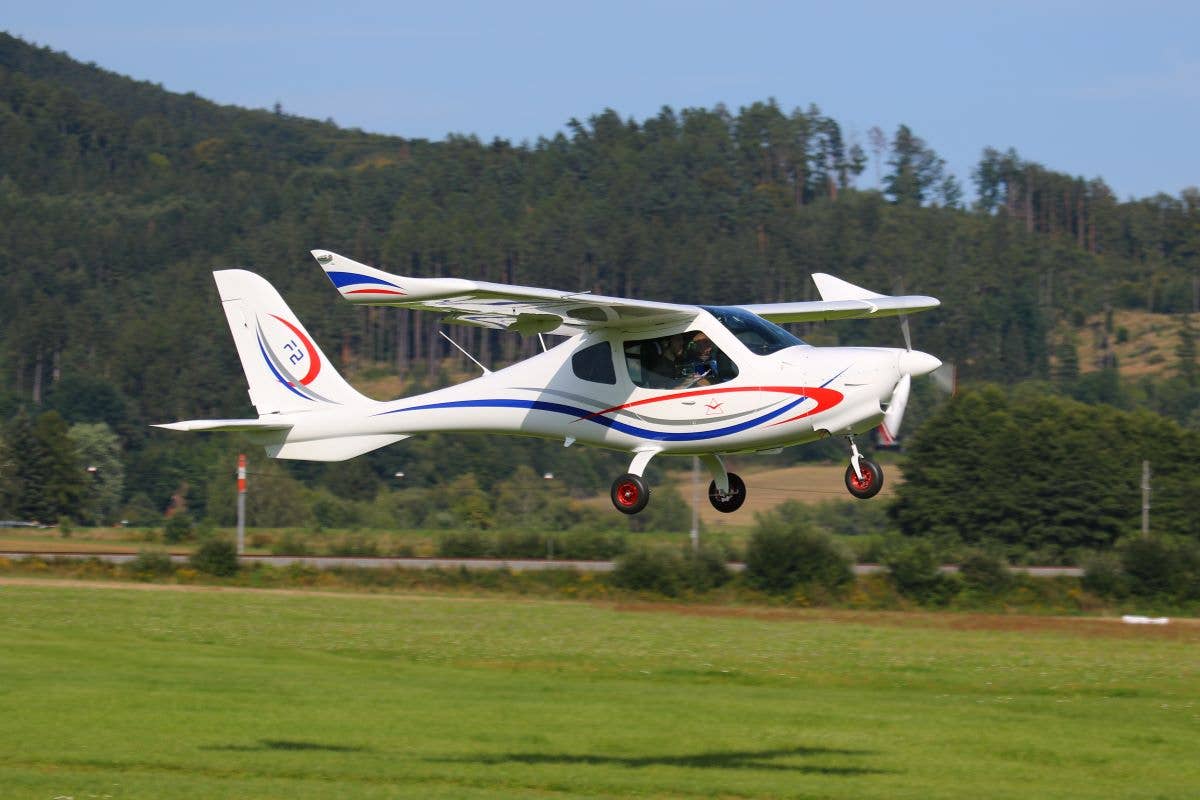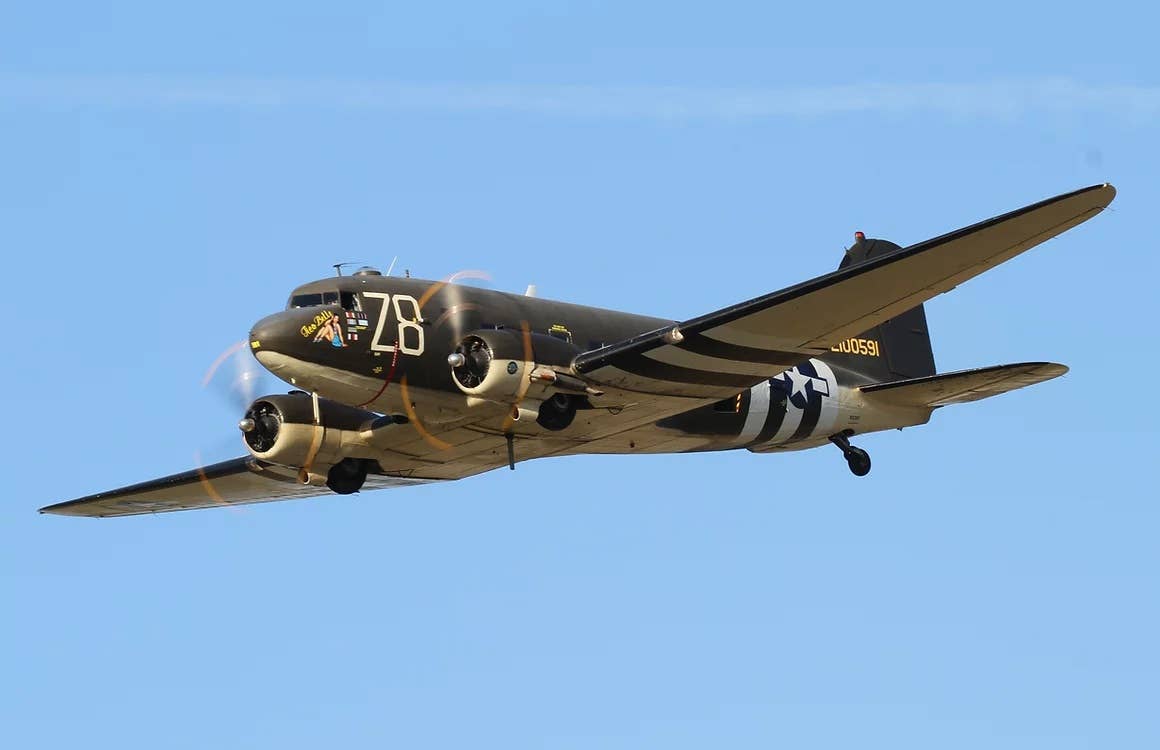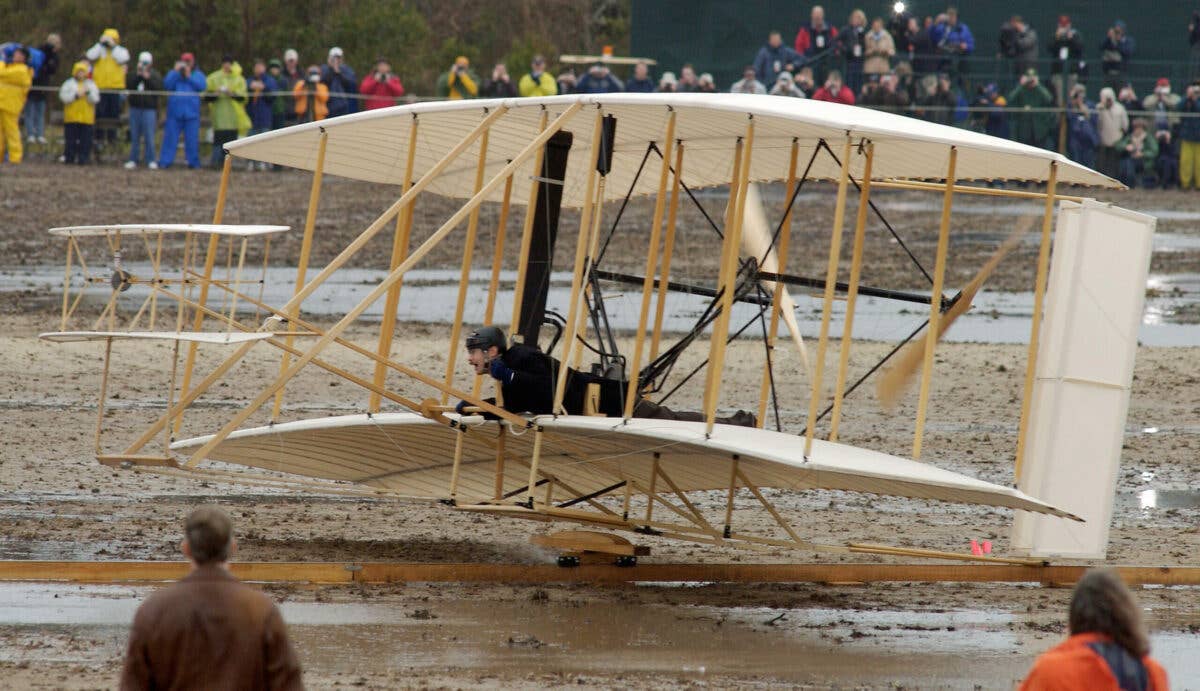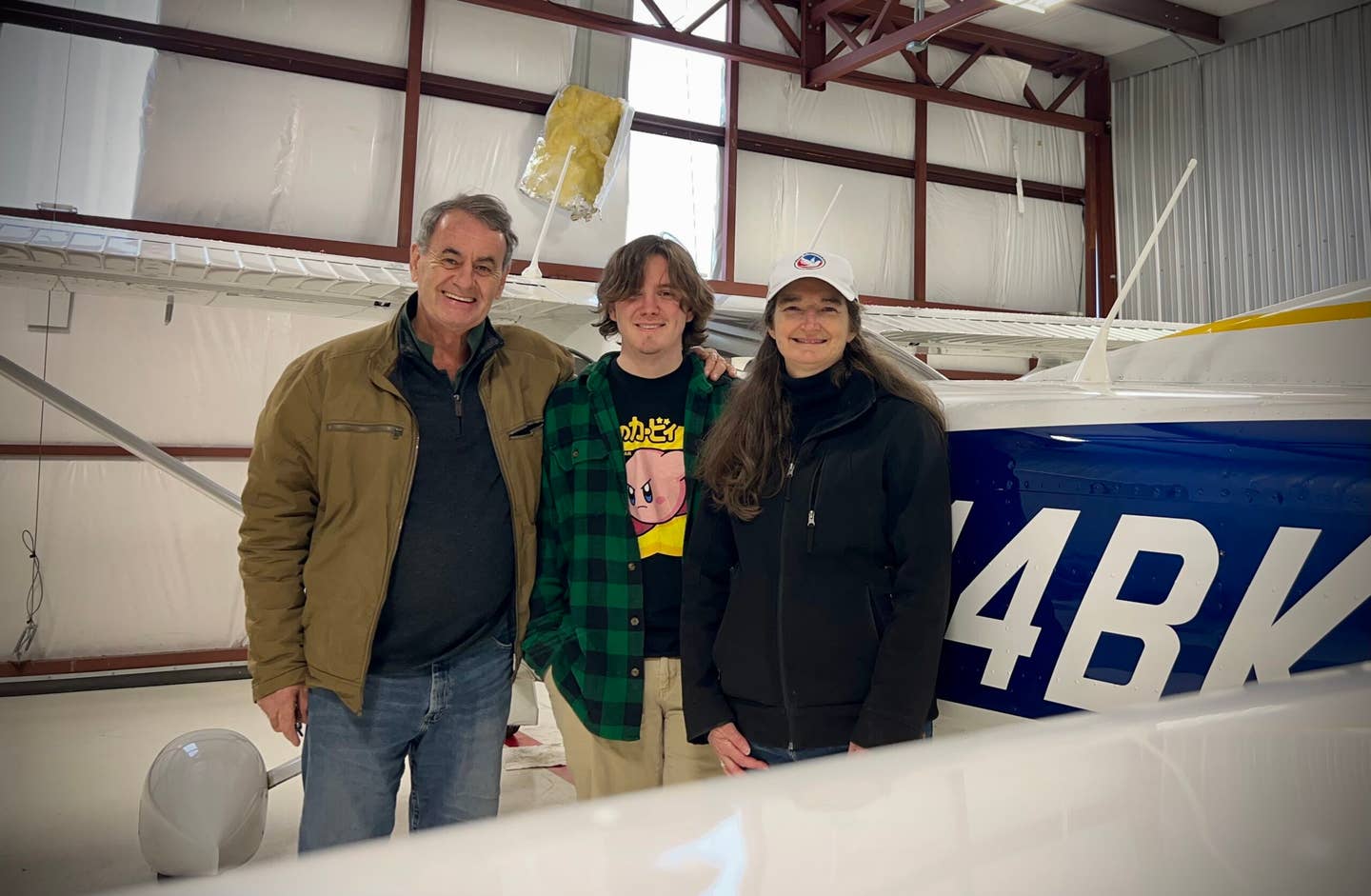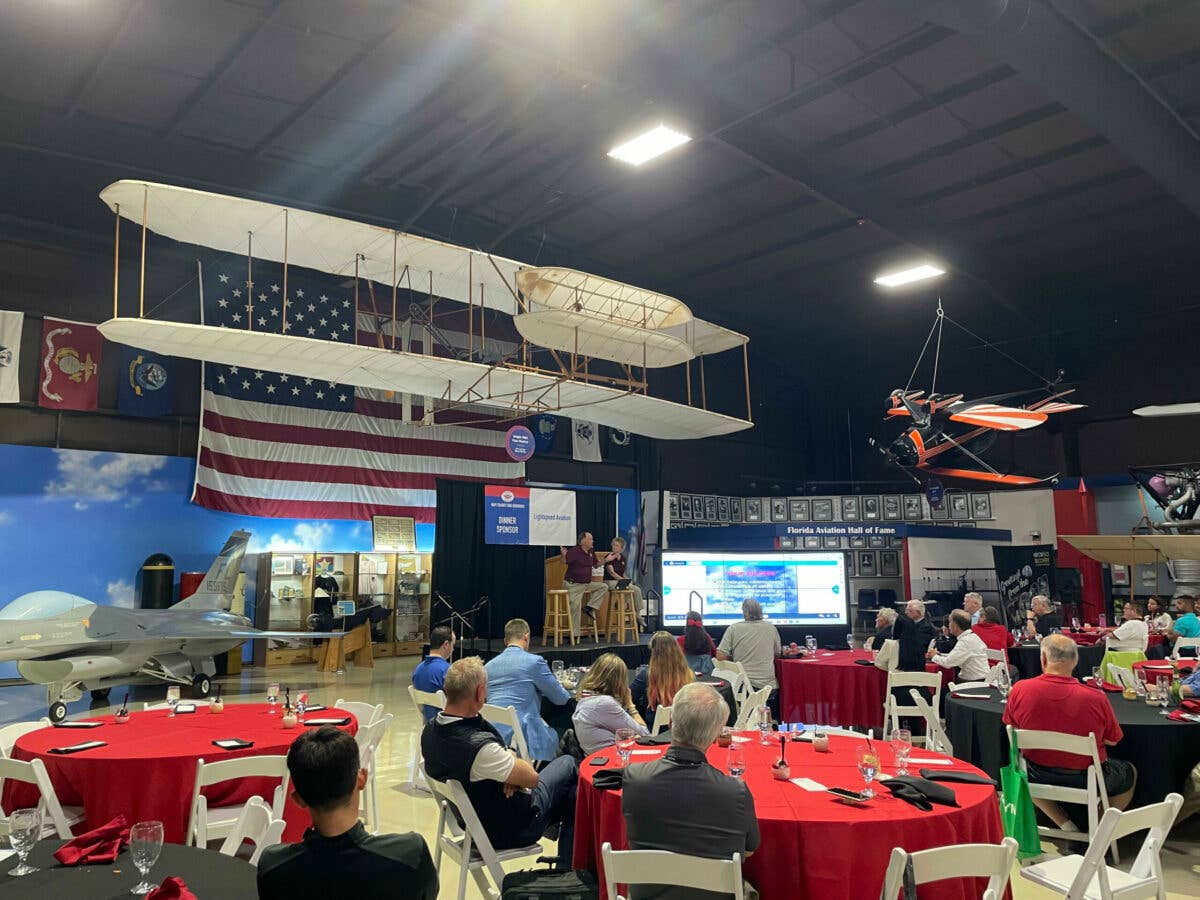Sean Tucker Celebrates We All Fly Gallery, and His Second Act
The aerobatic legend presented at the National Air & Space Museum in D.C. and highlighted his new mission, the Bob Hoover Academy.
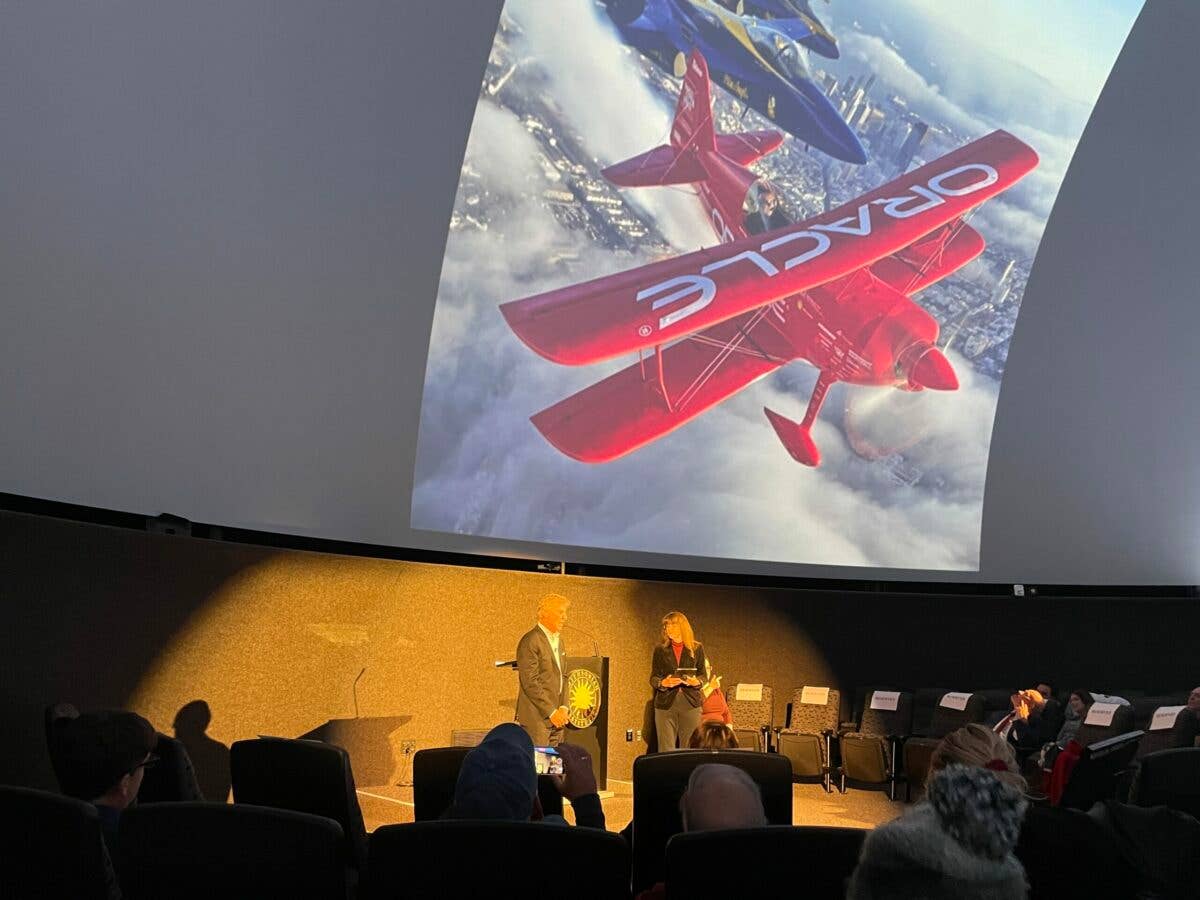
Tucker was introduced by NASM curator Dorothy Cochrane. [Credit: Stephen Yeates]
When you walk underneath the stunning red Oracle Challenger III suspended, inverted, you have to look up.
That’s one really compelling reason why Sean D. Tucker—aerobatic legend—donated his prized airplane to the Smithsonian National Air & Space Museum, so that it could draw visitors into the Thomas W. Haas We All Fly gallery, and inspire them to fly.
Tucker helped commemorate the opening of the new exhibit—focused on general aviation—with a special presentation at the museum’s planetarium on December 1. Since he retired officially from solo airshow performance in 2019, Tucker can trace the arc of his career as a top aerobatic champion and one of the best airshow pilots of all time into a fascinating story. Tucker was joined at the evening presentation by his family and the builders of the Challenger III, among other folks close to the pilot and educator.
“That airplane was so much fun to fly!” said Tucker as he spoke of the Challenger III, a wood-and fabric biplane fitted with a custom-built, 400 hp Lycoming AEIO-540 engine, capable of pulling its 1,226-pound frame through the air at more than 260 knots, its eight ailerons ensuring “fingertip” control and authority throughout a flight envelope that would destroy other airplanes of its class.
But, as it turns out, he’s not done yet.
A Near Miss with Life
“I am the most unlikely candidate ever to be in the Smithsonian Institution,” said Tucker to kick off his life story thus far. “I wasn’t good at anything—I was small, I didn’t have much of a purpose. I had one man, my uncle, who gave me a lot of joy.” But when he was 12, Tucker “lost his joy,” until he was about 17 years old. “I ran away from home—you don’t do that when you’re happy—I went to juvenile hall—that wasn’t very joyful.”
“But then I found flying. And the first time I took that airplane up, I got above this earth, and I had joy again.”
Tucker went on to illuminate for the audience—both in person and online—the ups and downs of his aviation career since that moment. One low point early on occurred when, while working as an aerial application pilot, he flipped the crop duster he was flying. A high point came in 1988, when he won the Advanced Aerobatic National Championship.
“From crop duster to premier aerobatic pilot to instructor to educator, Sean has excelled,” said Dorothy Cochrane, curator of general aviation for the NASM, in introducing Tucker at the presentation. But, she emphasized, his “most profound achievement may be his enduring engagement with kids, and sharing the magic of flight—he calls it—in all of its motivational forms, whether as a thrilling performer, and as a mentor to at-risk teenagers.”
A Second Act
Tucker’s connection with young people clearly stems from his own experiences as a youth at times at war with the world, and with himself. He has been an ongoing mentor throughout this career, but now, with his retirement from the intensity of the airshow scene, he can focus on what may be the most important project in his career—the creation of the Bob Hoover Academy.
Robert A. “Bob” Hoover—by most accounts, one of the best pilots that has ever graced the skies—held a special position in Tucker’s life. “Bob was Sean’s hero and mentor, and Sean has followed in those footsteps—precision flight footsteps—although we might say he has not quite followed and embraced the term ‘management,’” said Cochrane.
“Sean cannot contain his energy and we are the better for it,” she added.
Tucker has now channeled that energy into the Bob Hoover Academy, which has its roots in the Every Kid Can Fly program launched by Tucker and his son Eric in 2014. Wanting to provide a comprehensive experience beyond what was possible in an after school program, the Tuckers partnered with the Monterey County Office of Education (MCOE) to create a transportation-pathway diploma-earning high school classroom, which began in January 2016.
Now evolved into the BHA, and based at the Salinas Municipal Airport (KSNS) in California, the academy offers weekly ground school, flight training (both in the airplane, a Cessna 152, and a Redbird Flight Simulations AATD), and aviation-themed field trips.
Tucker may have been selected as one of the 25 Legends of Flight for the opening of the Stephen F. Udvar-Hazy Center in 2003—but Hoover’s traits of education, mental prowess, patriotism, humility, optimism, reverence for the sky, dignity, and tenacity are what he seeks to instill in those students participating in the academy. It’s particularly important to the young people who have graduated from the program—and gone on to the Marines, to FedEx, and to becoming instructors themselves, among other accomplishments.
“We’re down now in Salinas 65 percent in gang-on-gang shooting, not just because of our outreach, but the community’s outreach—and it’s working,” said Tucker.
It’s clear he feels that second act has only just begun.
How to Participate
You can support the Bob Hoover Academy here. And you can visit the Challenger III in its new home at the NASM for free—but you’ll need a timed ticket, available here.

Sign-up for newsletters & special offers!
Get the latest FLYING stories & special offers delivered directly to your inbox

